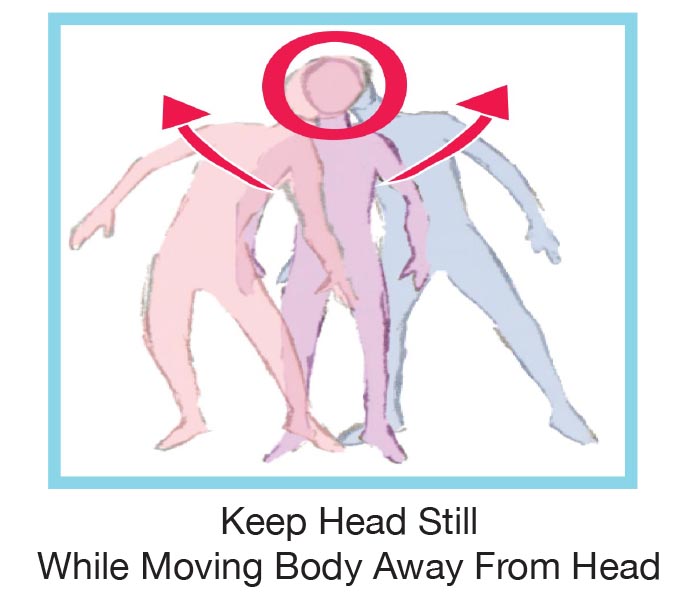Six Principles of PD Mime*
People with Parkinson’s Disease can apply these principles to specific movement challenges they may encounter. Here is an example I’ve personally grappled with:
- Awareness that when holding a glass of water my hand starts to tilt, almost spilling the contents.
- Observation of how I am presently holding a glass of water.
- Analysis of what is involved in picking up, holding and drinking from a glass of water, and breaking down the movements.
- Visualize what it looks like to pick up and drink from a glass normally.
- Mime — referring to the Three Mime Concepts below, practice the correct way of carrying and drinking from a glass.
- Real Life — mindfully hold a glass of water using corrected movements.
*Six Principles of PD Mime developed by Rob Mermin: https://robmermin.com/parkinsons-pantomime-project/
Three Mime Concepts
Individuals can apply these concepts to their everyday movements such as: eating, getting dressed, carrying things, etc.
1. Freeze/Relax

When creating a mime illusion it’s important to show contrast between holding the imagined object and when you let go of it. For example, when demonstrating a mime wall you take your ‘relaxed’ hand, then place and ‘freeze’ it flat and outstretched on the wall. When you remove your hand off the wall, the hand again, appears relaxed. Watch Barbara demonstrate this technique below as part of a Mime Over Mind workshop with Dancing With Parkinson’s Canada:
2. Space Substance

In showing a three-dimensionally shaped object in mime, such as holding a glass, it’s crucial to wrap your hand around the area where the real glass would appear. If your grip is too tight, it will appear as if you have crushed the glass.
3. Point Fix

When holding a subway pole and the train comes to a sudden stop, your body may suddenly jerk forwards and then backwards, but your hand stays in place holding the pole.
Can We Rewire the Brain?
On CBC Radio’s show, Ontario Today, ‘How does flow help you?’, I described how I use mime techniques to teach myself to walk more normally, and the state of ‘Flow’ this achieves. In response, guest expert, Dr. Jeff Puncher from University of Ottawa’s Faculty of Medicine responded by saying:
“In Barbara’s case it could be that her prefrontal cortex, which is the command centre of your brain, is basically saying ‘you can’t walk or you can’t do these exercises’…when that shuts down and powers down the new connections being made are saying, ‘you know what, no you can’ and sends new signals to the individual’s muscles and allows her to [think] ‘hey I can do this’ and she starts to do it.”
It’s possible that using mime to recreate movements for everyday activities opens new neural pathways in the brain to improve the quality of day-to-day life for people like me with Parkinson’s. Neuroplalsticity is the brain’s ability to change through experience, rewiring the brain to operate differently than how it did before.
It’s certainly worth exploring.
